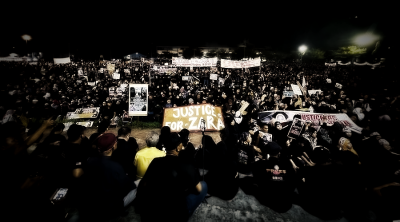
In 2024, Malaysia was shaken by the tragic death of 29-year-old Rajeswary Appahu, better known as Esha.
After enduring relentless cyberbullying, she took her own life.
Her loss sparked a landmark legal reform: the Penal Code Section 507D (2), now known as the Esha Clause, criminalizing severe forms of cyberbullying.
Just a year later, the nation was again jolted when 13-year-old Zara Qairina, a Form One student in Sabah, died after being brutally bullied at school.
Her ordeal reignited national debate on student safety and marked Malaysia’s first use of strengthened anti-bullying laws.
These are not isolated tragedies. Bullying in Malaysia is systemic, persistent, and devastating, leaving scars on families, schools, and communities.
Laws and limits
Legal reforms such as the Esha Clause are vital. Yet they also expose a painful truth: laws act after tragedy strikes.
Despite stricter policies and punishments, bullying continues to thrive in schools, homes, and online spaces.
The persistence of bullying points to a deeper issue: weak moral grounding and poor character formation.
Left unchecked, these behaviors evolve into adulthood as workplace bullying, sexual harassment, and abuse of power.
A growing concern in schools
The scale of the issue is alarming. A 2022 UNICEF–MOE study found that 1 in 3 Malaysian students reported being bullied.
Bullying takes many forms:
■ Physical assault in classrooms and schoolyards
■ Verbal abuse that erodes self-esteem
■ Cyberbullying, amplified by social media
■ Family dynamics, particularly older siblings emotionally overpowering younger ones.
For years, schools have leaned heavily on disciplinary measures. Yet statistics show punishment alone cannot solve the root cause.
What is truly needed is a cultural shift that nurtures empathy, resilience, and responsibility in young people.
Lessons from abroad
Global evidence shows that sustained prevention works.
■ Norway: The Olweus Bullying Prevention Program (OBPP), created in 1983 after three adolescents died by suicide due to bullying, reduced self-reported bullying by up to 50 percent in its pioneering Bergen study. Later implementations achieved 35–40 percent reductions.
■ Finland: The KiVa program showed students in non-KiVa schools were 1.3 times more likely to be victims and 1.5 times more likely to be bullies.
■ UK: A KiVa pilot cut victimization odds by 13 percent.
■ Meta-analyses: Confirm that well-implemented, whole-school programs typically reduce bullying by 15–25 percent.
These successes reveal a crucial truth: progress is possible, but only through systemic, long-term approaches that reshape school culture not just harsher punishments.
Ripple effects beyond schools
Bullying does not end at the school gates. It follows young people into workplaces and even national institutions.
A 2019 national study found that 39.1 percent of Malaysian employees experienced workplace bullying.
Universiti Putra Malaysia research showed 8 in 10 students had witnessed bullying in schools, while 1 in 3 admitted being victims themselves.
These patterns echo schoolyard dominance, later magnified by corporate hierarchies.
At societal levels, bullying mutates into abuse of power and selective enforcement of laws. The powerful escape accountability while the powerless are punished. Scholars call this “institutional bullying.”
The message is clear: bullying is not a childhood issue. Left unchecked, it seeps from classrooms into boardrooms and even parliaments.
Malaysia has the values, frameworks, and global evidence. What remains is our collective will from policymakers to parents to make character education a national priority.
A return to our educational roots
Malaysia’s National Education Philosophy already emphasizes the holistic development of intellect, spirituality, emotions, and physicality to create “responsible citizens who contribute to harmony and prosperity.”
Yet in practice, academic achievement has often overshadowed character formation. Strengthening character education is therefore not an import but a return to our roots. Why?
■ Rules may deter behavior temporarily.
■ But only values-driven education builds lasting character traits.
If bullying is a symptom of weak moral grounding, then character education is the vaccine.
A Malaysian solution: Charactaire Quintuple Secrets
This is where my book, Charactaire: Quintuple Secrets to Character Richness, offers a practical pathway.
The framework emphasizes five transformative secrets:
■ Integrity
■ Resilience
■ Empathy
■ Accountability
■ Purpose
These are not just anti-bullying antidotes. They are lifelong competencies for ethical leadership in society.
When integrated into schools, Charactaire can align classroom learning with national values, family support, and community reinforcement. Making character education the backbone of prevention.
Taking the bull by the horn
Malaysia cannot afford piecemeal fixes. If we truly wish to “take the bull by the horn,” we must go beyond punishment and adopt a character-first education strategy.
As mentioned, legal reforms like the Esha Clause provide accountability. Reporting hotlines give victims a voice though often underused due to stigma.
These measures are necessary, but reactive. What we need is prevention at the root:
■ Character education to instill respect, empathy, integrity, resilience, and accountability.
■ Whole-school programs like Olweus and KiVa that reshape entire school cultures.
■ Parental & community involvement to reinforce kindness and responsibility beyond classrooms.
Bullying thrives where aggression and dominance go unchecked. Character education flips the culture, making kindness, respect, and responsibility the norm.
Malaysia is well-placed to adopt this preventive approach. It resonates with our ethos:
■ It aligns with the Rukun Negara, which emphasizes morality, courtesy, and good behavior.
■ It complements the National Education Philosophy’s goal of producing “Insan Sejahtera.”
■ It prevents school bullying from mutating into workplace and societal harassment.
The way forward
The most effective strategy is not “laws or education.” It is both.
■ Laws and policies serve as safeguards (reactive).
■ Character education becomes the backbone of prevention (proactive).
Together, they can shift Malaysia from reacting to tragedies toward eradicating bullying at its roots. From fear of punishment to strength of character.
Every tragedy is one too many. Malaysia has the values, frameworks, and global evidence. What remains is our collective will from policymakers to parents to make character education a national priority.
The time to act is now. No more wake-up calls.

(Asohan Satkunasingham is an Author, Character Quotient Pioneer, Corporate Educator and Global HR Strategist.)
ADVERTISEMENT
ADVERTISEMENT








































